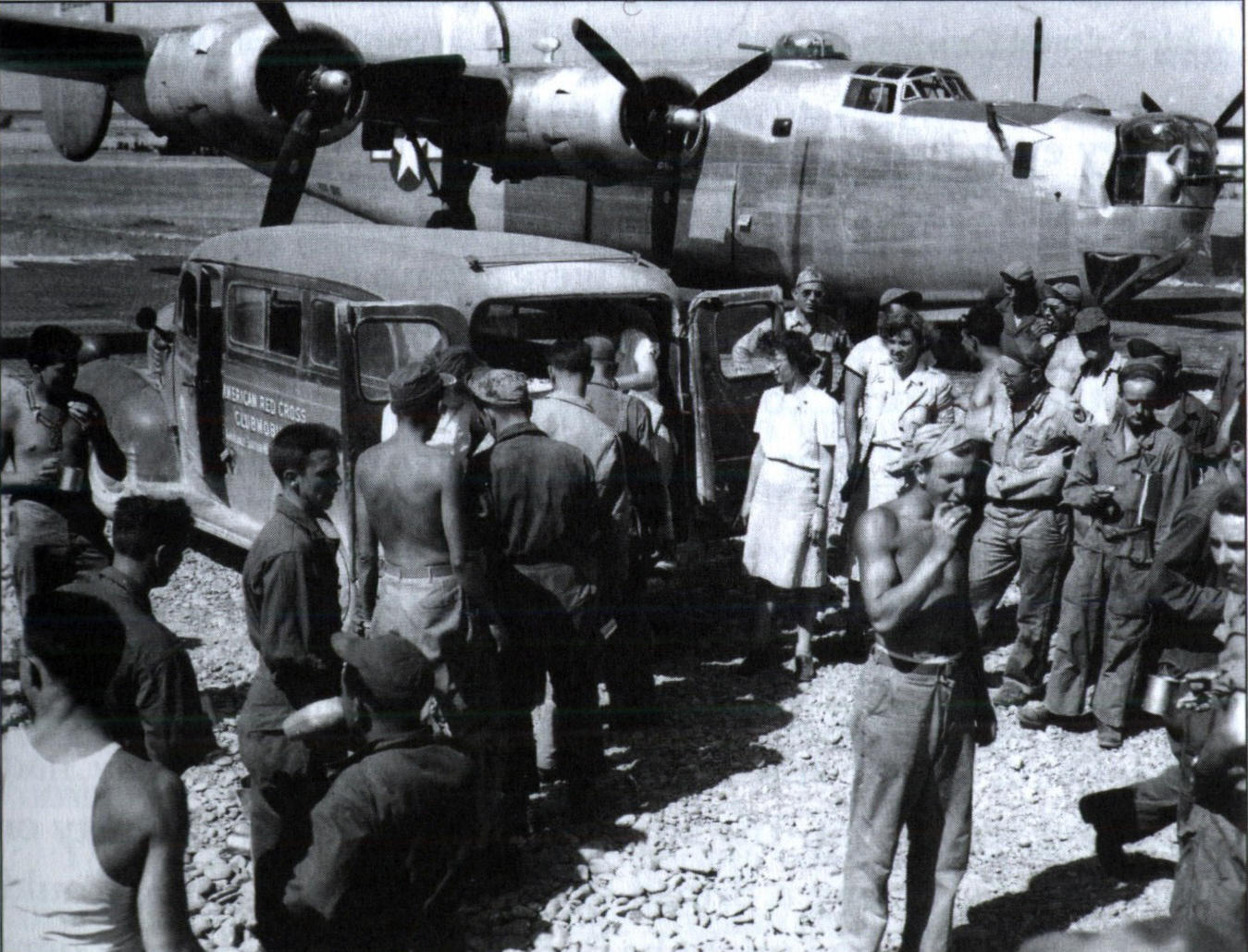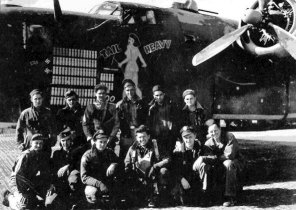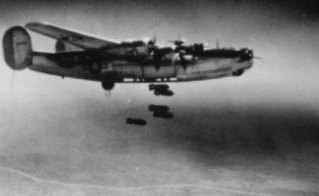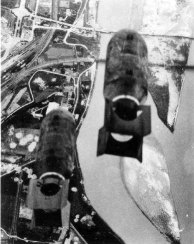-
|
-
- The
485th
BG totaled 187 combat
missions during the period of May 10, 1944 to April 25, 1945, dropping 10,550 tons of bombs on targets in Italy, France, Germany,
Austria, Hungary, Romania, Czechoslovakia and other Balkan countries.
- The 485th
BG was credited with destroying 61 enemy aircraft (probably destroying 41 more and
damaging 37 others; 15 additional aircraft were destroyed on the
ground). The 485th
BG was awarded a
Distinguished Unit Citation for a difficult mission in which 36
bombers inflicted massive damage to the Florisdorf Oil Refinery, near
Vienna, despite heavy flak and enemy fighter reaction.
- This intense activity, however, had a cost.
- The 485th
BG lost 59 planes in aerial combat and 62 others in accidents or
as a result of combat damage. The human losses were huge. Of these,
the missions of the 4 commanders are indicative as they participated
personally in these missions with their men. The first commander, Col.
Walter E. Arnold Jr, was shot down on August 27, 1944 (over Blechammer,
Germany) on his 19th combat mission; he survived the war.
The airplane of the new commander, Col. John P. Tomhave, was shot down
by flak on February 16, 1945, near Villach, Austria. Launching himself
from the plane with a parachute, he was captured and died on February
22, 1945 when Allied fighters attacked the train he was on which was
carrying prisoners. The third commander, Col. John Cornett, was shot
down over Vienna on March 22, 1945; he was captured by the Germans,
but survived the war. Three commanders shot down in less than a year:
the fourth commander, Col. Douglas Cairns, was in charge from
March 23, 1945, but Germany surrendered about a month after that.
The 485th BG’s
last mission was on April 25, 1945.
- During its operating period, from April 1944 to
the end of the war, the 485th
BG paid a heavy price. 475 men were killed in combat or died from
combat-related injuries. 250 men were captured; 13 of them escaped and
returned safely to Italy. 140 men, launching themselves from planes
that were shot down, were able to escape capture and return to base.
During May of 1945, the 485th
BG returned to the United States. The mighty B-24 took off
for the last time from Venosa, all the crews returned home. What had
been an airfield on which dozens of four-engined aircrafts came and
went, turned back into a peaceful countryside at the border of Apulia
and Basilicata, useful to plant wheat.
-
-

-
- The B-24's returns to airfield (Photo
used with permission of the 485th Bomb Group Association)
|
-
- Above: B-24 Tail Heavy.
- Below: Tail Heavy
crew
- (Photos used with permission of the 485th B.G.)
Above: B-24 in mission.
Below: on the target
(Photos
485th B.G., in
|
























